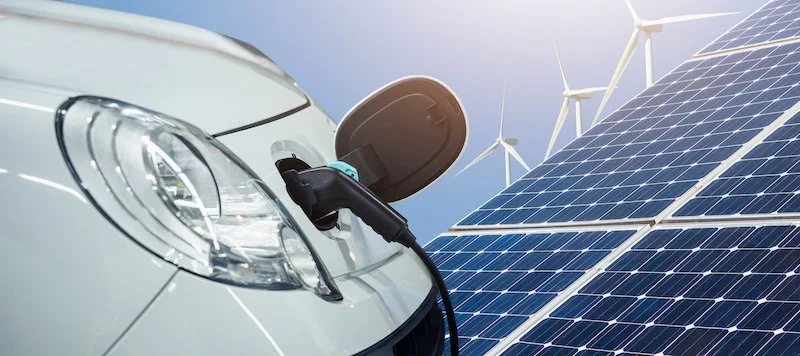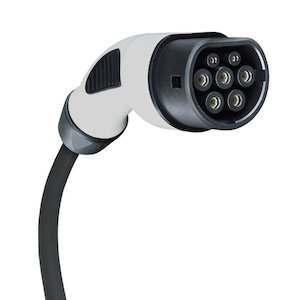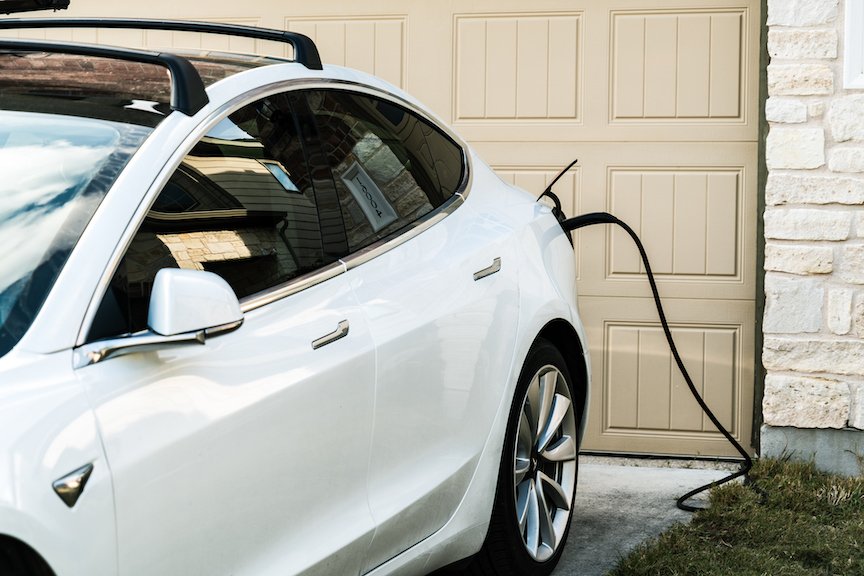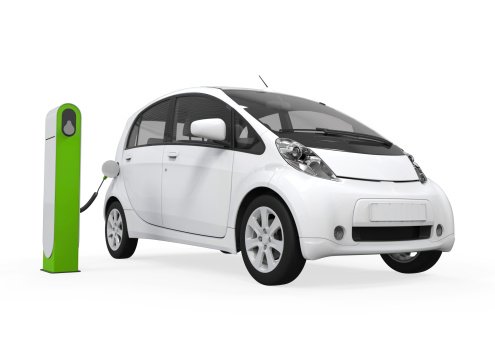Some cars are moved by electricity.
They do not need petrol to move.
Petrol is made from oil taken out of the ground.
Electric cars are plugged in to recharge the battery.
All of this means cleaner air and less noise.
What is an electric vehicle (EV)?
A recharger looks very different to a fuel pump. Image©Getty
Electric vehicles are moved by electric power rather than petrol or diesel. Instead of a fuel-driven internal combustion engine, an EV has a rechargeable battery that stores electric energy to power the motor and turn the wheels.
An electric car is refuelled by being plugged into the electricity at home or at a charging station.
The first cars made in the 1830s were electric, and were the first vehicles that didn’t use horses or people to pull them. Petrol engines were invented later, and as petrol was then cheaper than electricity, they soon took over as the way vehicles were powered.
However, in the 21st century, climate change is a very real prospect and the world is looking at ways to slow it down. One way is by changing how we use energy, and electric vehicles are seen as the way to reduce pollution and to be more environmentally friendly. They produce zero emissions and are quiet, reducing noise pollution as well.
Charging progress can be checked via a smart phone. Image©Dreamstime
They are more economical too in that it costs much less to refuel an electric car than to fill a car with petrol, which is a fossil fuel and therefore is neither renewable nor sustainable. Almost all of the energy in the battery in an electric car, around 80%, powers the car. By contrast, only 12% to 30% of petrol moves a car.
Lithium batteries under the bonnet of an electric car. Image©Dreamstime
The motor in an electric vehicle is much simpler than that of a petrol engine, therefore making running and maintenance costs greatly lower.
Currently there are a number of vehicles that combine both a fuel engine and an electric battery. These are HEVs: hybrid electric vehicles and PHEVs: plug-in hybrid electric vehicles. On long trips the petrol engine can be used and for short trips the electric power can be used. However, this is for the short term while the electric vehicles develop along with the ease of recharging them on long trips.
As the technology improves, the distance an electric car can travel on a single charge is increasing. The average driver most regularly drives short distances and can charge their car at home overnight. On longer trips they will be able to use charging stations along the way, and these are becoming more common. It can take from 30 minutes to 12 hours to charge an electric car, varying on the size of the battery and the power of the charging station.
An electric car being recharged at home. Image©Getty Images
As we focus on developing better and more efficient electric cars, there is also a development in electric public transport vehicles, trucks, scooters, motorbikes and even farm vehicles. The time is fast approaching when all types of vehicle can be – and will be- electric.
An electric car recharging at a public charging station. Image©Getty
Along with this development, other things need to be considered, such as finding the best public sharing systems to recharge the increasing number of EVs, for example at shopping centres and railway stations, how to have recharging stations along highways, places where public transport vehicles recharge along their routes.
It is fair to say that increasing the number and efficiency of EVs will create a great deal more change than just replacing fuel with electricity. The greatest benefit will be to the environment and to the planet.
The showroom of an electric car dealership. Image©Getty
It’s a good idea to get information from more than one source!
Read
https://www.edfenergy.com/for-home/energywise/how-do-electric-cars-work
https://easyscienceforkids.com/electric-car-facts/
Watch
https://thekidshouldseethis.com/post/electric-cars-future







